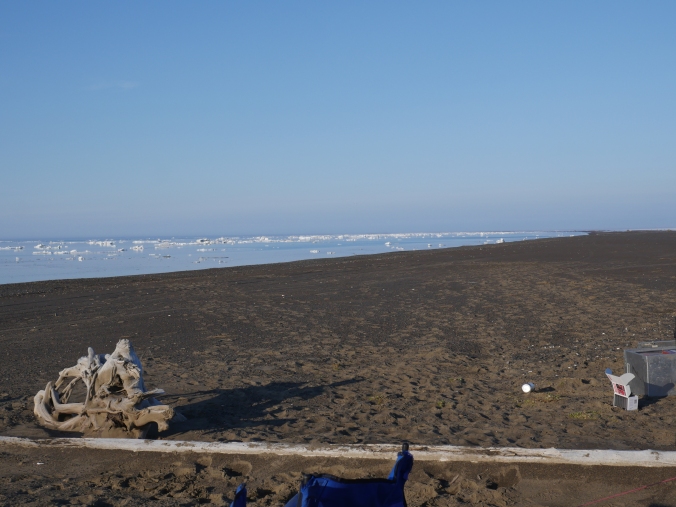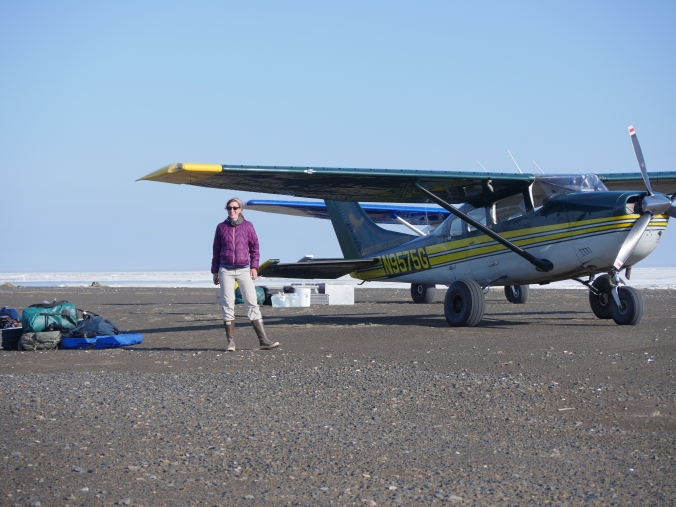Over a third of the Chukchi coast in northwestern Alaska is protected by a chain of barrier islands. Along with the associated lagoons, this system of barrier islands is vital to the birds, mammals, and fish in the region; however, these landscapes are under threat from rising seas and increased storm surges. The loss, or periodic inundation of these barrier islands, in addition to the presence of new boreal predators moving north in concert with a changing climate, creates a hazard for the animals that live along this coast.

Barrier islands of Kasegaluk Lagoon on the Chukchi Sea coast of Alaska. You can see the narrow island disappearing into the distance. This island is approximately sixteen miles long and is part of a chain of islands stretching about 40 miles north from Icy Cape.
In early June 2016, we set up our base camp on a barrier island just north of Icy Cape on Kasegaluk Lagoon in the National Petroleum Reserve – Alaska. This lagoon has been designated a ‘Special Area’ due to its importance to beluga whales, polar bears, walrus, sea ducks, and shorebirds. The Kasegaluk Lagoon has the highest abundance and diversity of bird life of all Arctic Alaska coastal lagoons.

Field technician Stacie Evans sets up a base camp on the barrier islands. The crew of two flew from Kotzebue, Alaska with Golden Eagle Outfitters in two small planes that landed directly on the barrier islands.

Eiders build their nests on exposed beaches, starting with bare scrapes and filling them in with down as laying progresses.
Our efforts to study the breeding ecology of eiders, supported by the Wilburforce Foundation, will help prioritize specific areas along the barrier islands that are critical for the long-term health of the species.